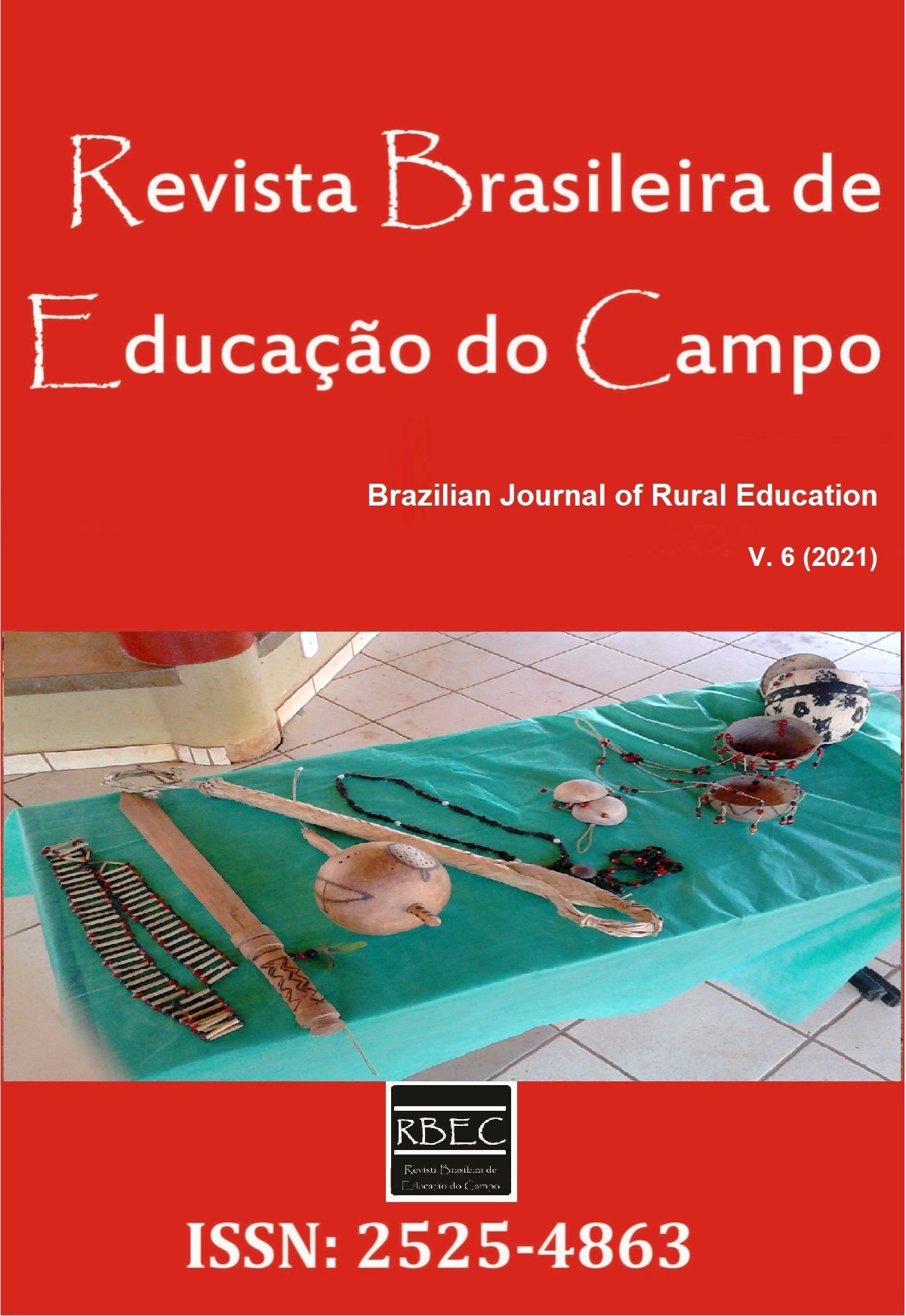Basic schooling in Brazil: advances, continuance, and contrasts between rural e urban populations
DOI :
https://doi.org/10.20873/uft.rbec.e8998Mots-clés :
elementary education, social justice, rural education, educational inequalities.Résumé
ABSTRACT. The text presents, through statistical data, a reflection on the situation of basic schooling of the population residing in the countryside, vis-à-vis the population residing in the urban area, in order to understand advances and permanence of the conditions of the educational offer and its effects in the distance and in the approximation of the guarantee of social justice and the right to schooling. The methodological process involved content analysis and the construction of quantitative data provided by the Brazilian Institute of Geography and Statistics (IBGE), the National Institute of Educational Studies and Research Anísio Teixeira (INEP) and the Institute for Applied Economic Research (IPEA). For the study, these categories were selected: number of countryside schools, years of study and schooling access by location (rural/urban). The data express an inequality situation in the schooling indicators of rural areas and the Brazilian North and Northeast regions. Despite the advances, the inequalities in the Brazilian educational system are significant and strongly evidenced in the contrast between rural and urban areas. The persistence of unfavorable situations increases the inequality condition of the rural population.
Téléchargements
Références
Abramovay, R., & Favareto, A. (2010). Contrastes Territoriais dos Indicadores de Renda, Pobreza Monetária e Desigualdade no Brasil da Década de 1990. Ruris - Revista do Centro de Estudos Rurais, 4(1), 39-83.
Castro, J. A. (2009). Evolução e Desigualdade na Educação Brasileira. Economia e Sociedade, 30(108), 673-697. https://doi.org/10.1590/S0101-73302009000300003
Castro, J. A. (2010). Perspectivas da Política Social no Brasil. Brasília: IPEA.
II Conferência Nacional Por uma Educação do Campo. (2004). Por Uma Política Pública de Educação do Campo. Declaração Final: versão plenária. Luziânia: [s.n.].
Corbucci, P., Araújo, H. E., Codes, A., & Bassi, C. (2015). PNADs 2004-2014 – Educação. In PNAD 2014 – breves análises. Nota Técnica nº 22 IPEA. Brasília, dezembro.
Constituição da República Federativa do Brasil. (1988, 05 de outubro). Recuperado em 10 junho 2019 de: http://www.senado.gov.br/sf/legislacao/const/
Instituto Brasileiro de Geografia e Estatística (IBGE). (2010) Censo demográfico 2010. Brasília.
Instituto Brasileiro de Geografia e Estatística (IBGE). (2012). Pesquisa Nacional por Amostra de Domicílios 2012. Brasília.
Instituto de Pesquisa Econômica Aplicada (IPEA). (2010). PNAD 2009 - Primeiras análises: situação da educação brasileira – avanços e problemas. Os Comunicados do Ipea, 66, nov.
Kassouf, A. L. (2007) O que conhecemos sobre o trabalho infantil? Nova Economia, 17(2), 323-350. https://doi.org/10.1590/S0103-63512007000200005
Lei nº 9.394, (de 20 de dezembro de 1996). Estabelece as Diretrizes e Bases da Educação Nacional. Diário Oficial da União, Brasília, 1996. Recuperado em 10 junho de 2019 de: https://www2.senado.leg.br/bdsf/handle/id/70320
Lei nº 11.274, (6 de fevereiro de 2006). Altera a redação dos arts. 29, 30, 32 e 87 da Lei nº 9.394, de 20 de dezembro de 1996, que estabelece as diretrizes e bases para a educação nacional, dispondo sobre a duração de 9 (nove) anos para o ensino fundamental, com matrícula obrigatória a partir dos 6 (seis) anos de idade. Diário Oficial da União, Brasília, DF, 7 fev. 2006. Recuperado em 10 junho de 2019 de: https://legis.senado.leg.br/norma/572813
Lei nº 12.960, (de 27 março de 2014). Estabelece a exigência de manifestação de órgão normativo do sistema de ensino para o fechamento de escolas do campo, indígenas e quilombolas. Diário Oficial da União, Brasília, 2014. Recuperado em 10 junho de 2019 de: https://legis.senado.leg.br/norma/584771
Parecer nº 36, (de 04 de dezembro de 2001). Diretrizes Operacionais para a Educação Básica nas Escolas do Campo. Diário Oficial da União, Brasília, 2001. Recuperado em 10 junho de 2019 de: http://portal.mec.gov.br/cne/arquivos/pdf/EducCampo01.pdf
Valadares, A. A., & Souza, M. G. P. (2015). Evolução do emprego agrícola entre 2005 e 2014: pequenos ganhos contra a precariedade predominante. In PNAD 2014 – breves análises. Nota Técnica nº 22 IPEA. Brasília, dezembro.
Veiga, J. E. (2002a). Cidades Imaginárias. O Brasil é menos urbano do que se calcula. Campinas, SP: Autores Associados.
Veiga, J. E. (2002b). A face territorial do desenvolvimento. Interações. Revista Internacional de Desenvolvimento Local, 3(5), 5-19.
Veiga, J. E. (2004). Nem tudo é urbano. Ciência e Cultura, 56(2), 26-29.
Veiga, J. E. (2005). A relação rural/urbano no desenvolvimento regional. Cadernos do CEAM (Centro de Estudos Avançados Multidisciplinares da Universidade de Brasília-UnB), 17, 9-22.
Téléchargements
Publié-e
Comment citer
Numéro
Rubrique
Licence
Proposal for Copyright Notice Creative Commons
1. Policy Proposal to Open Access Journals
Authors who publish with this journal agree to the following terms:
A. Authors retain copyright and grant the journal right of first publication with the work simultaneously licensed under the Creative Commons Attribution License that allows sharing the work with recognition of its initial publication in this journal.
B. Authors are able to take on additional contracts separately, non-exclusive distribution of the version of the paper published in this journal (ex .: publish in institutional repository or as a book), with an acknowledgment of its initial publication in this journal.
C. Authors are permitted and encouraged to post their work online (eg .: in institutional repositories or on their website) at any point before or during the editorial process, as it can lead to productive exchanges, as well as increase the impact and the citation of published work (See the Effect of Open Access).














